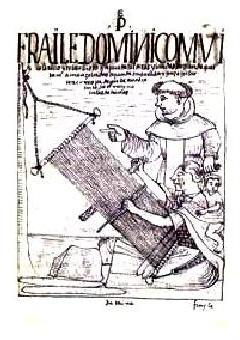|
ANDEAN TEXTILES IN HISTORICAL PERSPECTIVE (Page 2) The Spaniards initiated the conquest of the Incas in 1532 and during the forty eight years that lapsed between then and the year 1580 the power of the Inca lineage still remained substantial. The initial onslaught of the Spanish Conquest was a period of intense cultural interaction between conquerors and conquered. One must bear in mind that the initial wave of Spaniards was quite small in number and achieved results far beyond any expected. Many conquistadors took wives of noble Inca origin, begot children by them (the chronicler “Inca”Garcilazo de la Vega, offspring of the Conquistador Garcilazo and the Inca Ñusta (Princess) Chimpu Ocllo is a prime example) and established themselves as the new rightful lords of the realm, eventually more than tacitly disavowing the very sovereignty of Spain itself and seeking to constitute a “neo-Inca” state. At the same time, the conquistadors themselves also split into various factions, warring with each other for the overall supremacy of Peru. During this period, the attitude toward the Inca nobility -those which had acquiesced to the over lordship of the conquistadors as well as other "rebel" Incas who had declared themselves in rebellion and withdrawn to remote highland fastness- was one of appeasement , sometimes of conciliation, in most cases of maintaining the existing status quo, since the allegiance of the various Inca lineages could always tip the balance of the scale in the internal wars and in the overall conflict against the centralised power of Spain (adding to all that, the fact that many of the protagonists of this drama had become in-laws and kin in the process !). Among other consequences of these happenings were the extraordinary textiles produced during this period and those few preserved specimens reveal an astonishing fusion of designs that incorporates royal Inca Tocapus and European medieval tapestry themes. Generally speaking, the textiles belonging to this period are referred to as “Transitional Style” or “Transition Period Weavings”. In truth, however, many textiles dating from as late as the 18th century, but which exhibit both Inca as well as European characteristics and include weft and warp faced elements within the same piece are also termed “Transitional”. Nevertheless, by 1580, Spain had effectively controlled its rebellious Spanish and Inca subjects. This was partially achieved not only through effective military action -made even more decisive by the divisions between the conquistadors (the Pizarros and the Almagros all died by each other’s swords)- but also through the eventual importation from Spain of actual “colonists” with families (as opposed to soldiers of fortune and renegade warriors, prone to becoming Incas themselves) to populate their newly founded rectilinear towns and villages. Through that one act, the fate of the native races and of the Incas and whatever claims to equal status with the conquistadors they may have harboured, was forever doomed. The period known as “The Conquest” terminated and yielded the historical stage to the next period, known as “The Colony”. The New World was now ruled by “Viceroys” representing the direct interests of Spain and its king, not by condottieri who -themselves or their offspring- would have been quickly assimilated into the mainstream of Andean culture after having contributed to it such elements as steel, horses, gunpowder, the cantilevered arch and -though most of them were illiterate- the printing press, in the course of their brief and destructive passage. But no, a different destiny lay ahead. Under the iron fisted rule of the viceroy Toledo, the last remaining rebel Inca -Tupac Amaru I- was captured and executed in Cusco (after being baptised into the Catholic faith). The Inca lineage was not absolutely destroyed, but their influence disappeared altogether, although the trouble was taken to marry those remaining females of noble Inca origin into families of conquistadors and -ironically- into the families of San Ignacio de Loyola and Saint Francis Xavier, leading Saints in the Jesuit order which was, at that time, beggining to acquire paramount influence in the religious administration of the Spanish colonies, displacing those religious Orders which had originally accompanied the conquistadors, such as the Augustinians and -more predominantly- the Dominicans. The latter had earned for themselves the general hatred of everyone -Spaniards included- for their firebranding and abusive policies which extended punishment to all, Inca and commoner alike and sought to destroy the native culture altogether. The elimination of the Incas as an effective influence in native affairs was further enforced by a series of harsh decrees known as the Ordinances of Toledo, promulgated with the intention of consolidating and extending the power of the Spanish crown. Many of these decrees were aimed at eliminating indigenous religious practices and symbolic activity. Among these activities -known as the “Extirpation of Idolatries”, were included prohibitions upon the use of symbols of non-Christian nature and origin within the textiles and other native art forms. |
Inca Tocapu Symbols On Unku Tunic
Inca Garcilazo de la Vega
Transition Period Tapestry Weave
“Dominican Friar Very Angry And Arrogant“ - Guaman Poma |






